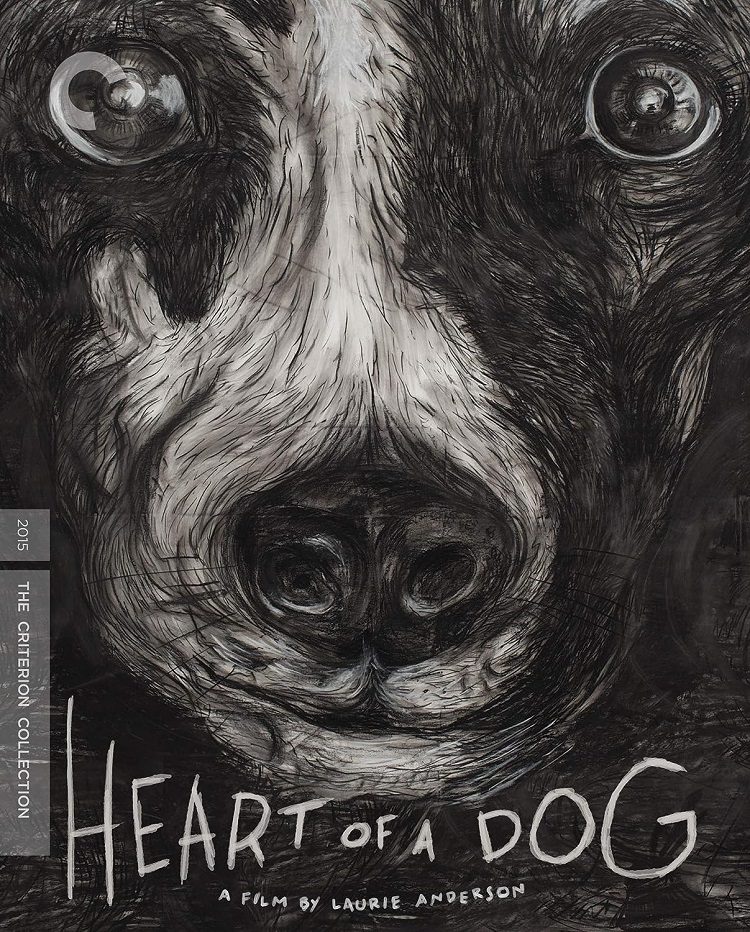
Can a film permeated with thoughts on death be playful? Can it be uplifting? Can it be equally cerebral and emotional, its two sides not merely coexisting but helping to inform the other? Can a film in which a person is almost wholly absent tell us innumerable amounts about the filmmaker’s relationship with that figure?
In Heart of a Dog, the wondrous second feature film from multidisciplinary artist Laurie Anderson, the answer to all of the above is a resounding “yes.” A deeply personal essay film narrated by Anderson in the kind of bemused monotone that features in spoken-word pieces on her brilliant avant-garde art-rock albums of the 1980s, Heart of a Dog is a fundamentally musical work, lilting from idea to idea with a free-flowing associative ease.
Among those ideas: the increased American surveillance state in the wake of Sept. 11, Anderson’s relationship with her late mother, the “bardo” period that follows one’s death in Buddhism, and centrally, the recent passing of her rat terrier, Lolabelle. The membrane between these subjects is thin in Anderson’s telling, her voice gliding across the film in a mode that’s contemplative, wry and heartbreakingly confessional all at once. Abstract concepts segue into remarkably intimate revelations in a way that’s both bracing and illuminating.
Anderson’s collage-like approach to the film’s imagery mirrors that of its subject matter, combining line-drawn animation, Super 8 home movies, (faux-)security camera footage and digital video of various provenance, often layering sources on top of each other or digitally altering them in some way.
In a film filled with meditations on absence, the most acute is almost literally absent. Anderson’s husband, Lou Reed, died in 2013, and until the film’s very end is only glimpsed in the background. Of course, it’s no surprise that Anderson’s attempts to reconcile with death would have been wrapped up in Reed’s passing, but his sudden presence makes for an incredibly moving catharsis.
Criterion’s Blu-ray release presents Heart of a Dog in a 1080p, 1.78:1 transfer that handles the variety of source material just fine. Artifacting is unsurprisingly present on lower-grade footage, including iPhone and GoPro shots, but the bulk of the film is clear and sharp, as one would expect from modern digital video. (The bulk was shot on a Canon 5D Mark II.) The animated sequences in particular look excellent. The 5.1 DTS-HD Master Audio soundtrack has a ton of presence, and offers a great showcase of Anderson’s score.
Speaking of the score, Anderson originally envisioned the film without one, and an alternate no-music soundtrack is presented here. The other major supplement is a new 40-minute interview with Anderson, who is a delightful conversationalist: intellectual yet warm and full of fascinating insights into this film and her other projects, including the 1986 concert film Home of the Brave and a variety of art installation pieces.
Also included among the extras: two brief deleted scenes, footage from Anderson’s 2016 concert for dogs in Times Square, and Lolabelle’s Christmas card, which offers an extended look at her piano-playing skills. Two inserts are included: A postcard-sized booklet with images from the film and a standard-sized leaflet with an essay by critic Glenn Kenny, whose analytical and personal appreciation here is the perfect complement to the film.